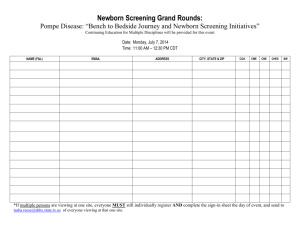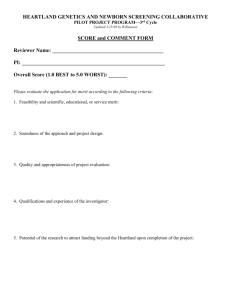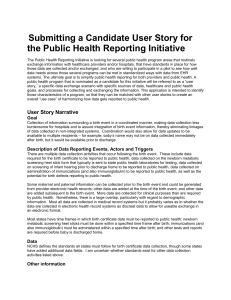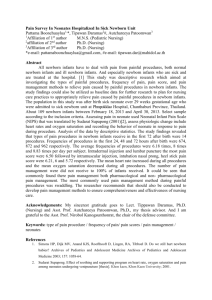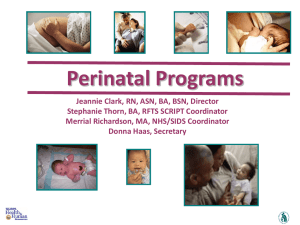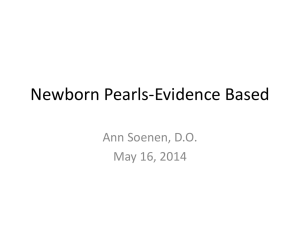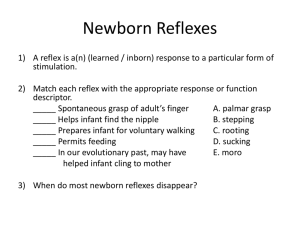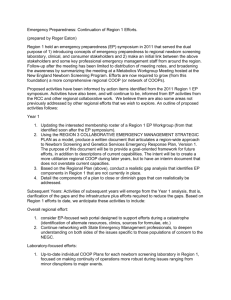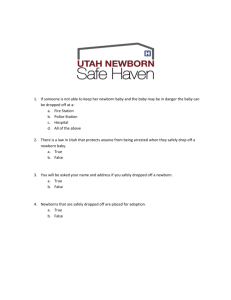WatterbergSlides0713
advertisement
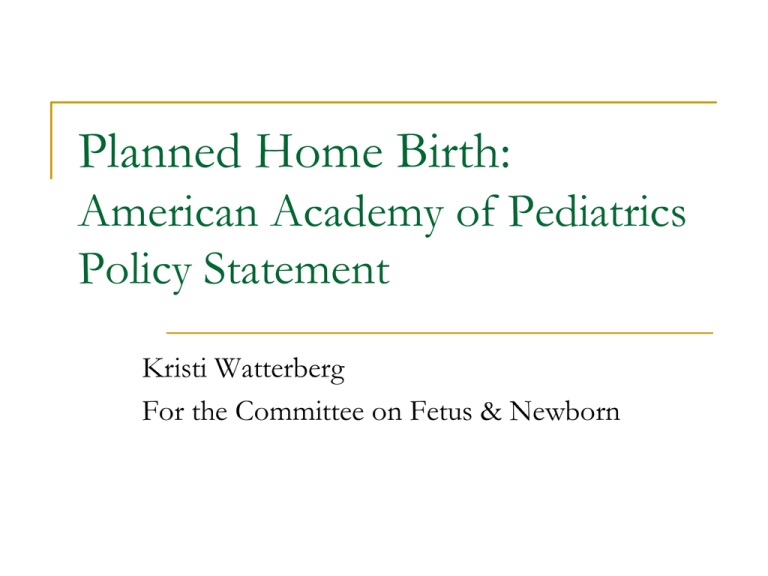
Planned Home Birth: American Academy of Pediatrics Policy Statement Kristi Watterberg For the Committee on Fetus & Newborn Background for AAP statement: the revised ACOG statement “Although the Committee on Obstetric Practice believes that hospitals and birthing centers are the safest setting for birth, it respects the right of a woman to make a medically informed decision about delivery.” OB/GYN 2011; 117:425 With ACOG recognition of women’s autonomy to choose a home birth, AAP felt it necessary to outline policy standards for care of infants born at home Prenatal counseling Advocate for best interest of the child: communicate the apparent increase in neonatal mortality Assess whether the specific situation qualifies as lowrisk for a planned home birth Recognize that a substantial number of women will need transfer (10 - 40%); transfer is not a failure of home birth but a success of the system Support provision of care by midwives certified by American Midwifery Certification Board Low-risk fetus for home delivery Appropriate for gestational age not small or large for gestational age (SGA, LGA) Term gestation (37 – <41 completed weeks) Singleton Cephalic presentation Care of the neonate at delivery At least one person should be present whose primary responsibility is care of the newborn And who has the training, skills, and equipment to resuscitate the infant, including positive pressure and chest compressions The telephone (or other communication system) should be tested and the weather monitored Care of the neonate: transition Transition: (first 4 – 8 hours): physical exam, risk assessment, vital signs q 30’ until stable for 2o Infants who received extensive resuscitation should be transferred to a hospital for close monitoring and evaluation If mother is for Group B strep, treat with antibiotics and observe baby closely Infants who appear <37 weeks gestation, and those with any signs of illness should also be transferred Continuing care after delivery Comprehensive standards are found in: “Guidelines for Perinatal Care” available from AAP/ACOG Specific Screening and Rx standards Glucose screening (LGA, SGA, resuscitated infants) Vitamin K injection Eye prophylaxis Hepatitis B vaccination Evaluation for hyperbilirubinemia (24 – 48o) Screening: hearing, ‘universal newborn screening’ per state regulations Follow up care Comprehensive documentation and communication with follow up provider is critical Examination by an experienced pediatric provider within 24o of birth and within 48o of first exam Include written documentation of screenings and treatments performed, medications given Weight, physical exam Feeding evaluation Oxygen saturation screening Continuing care of the newborn infant Care should adhere to “Guidelines for Perinatal Care” and the AAP statement regarding care of the well newborn infant (Pediatrics 2010; 125:405). Regardless of the circumstances of his or her birth, including location, every newborn deserves health care that adheres to these standards. In conclusion The goal of providing high quality care to all newborn infants can best be achieved through continuing efforts by all participating providers and institutions to develop and sustain communications and understanding based on professional interaction and mutual respect throughout the health care system.
